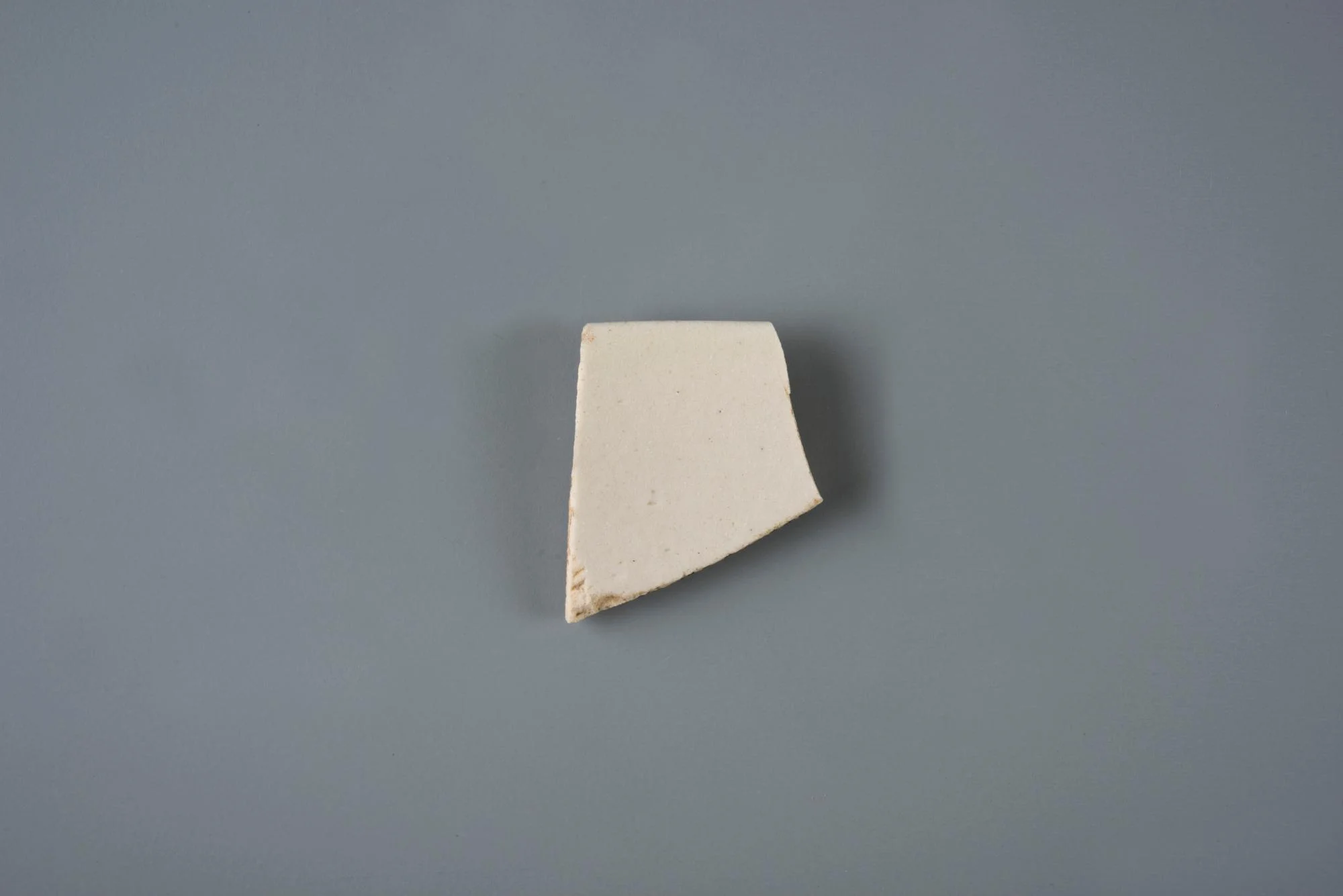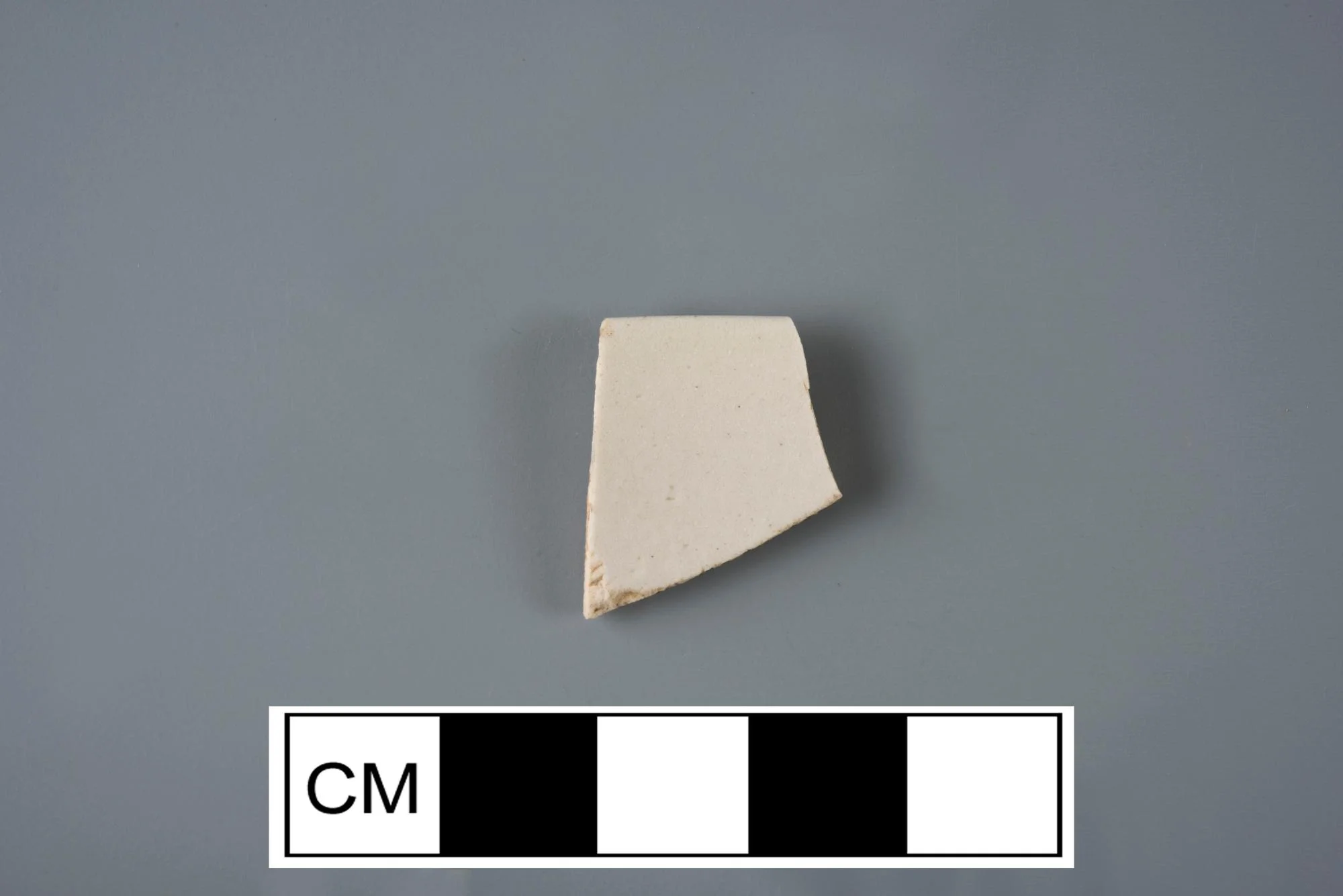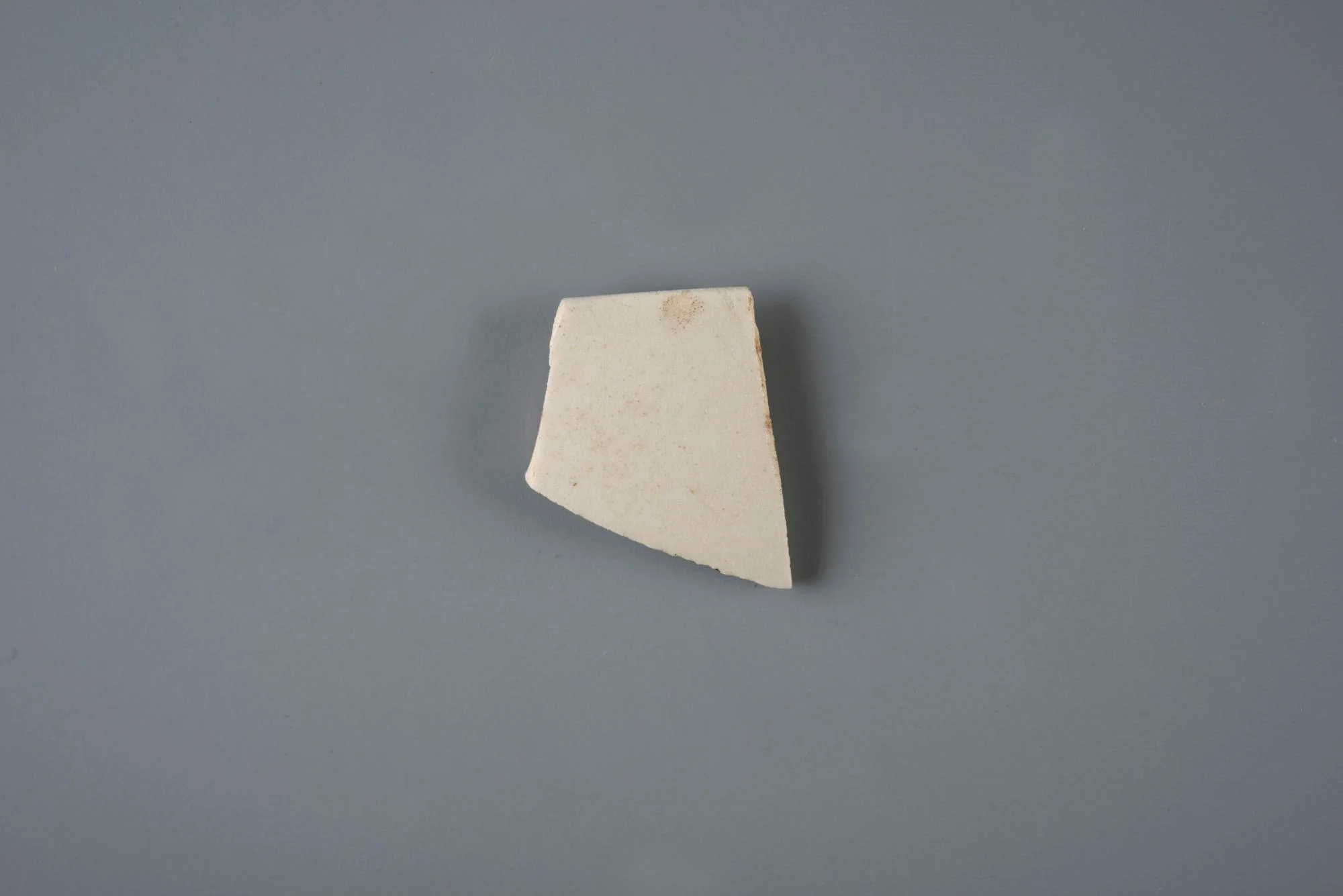Notes
This is a fragment of a white salt glazed stoneware teabowl. This white bodied ceramic was produced by combining naturally white clays with ground and calcined flint. Undecorated teaware forms such as this item were generally popular between the first and last quarter of the eighteenth century, and would have been common items in American stores and homes.
Teabowls such as this form were essential for the consumption of tea within the households of the eighteenth century. By the mid-eighteenth century and later, tea drinking was a common practice within households of both high and low social and economic statuses. Making and drinking tea required a variety of vessel forms. Tea was drunk from small, handle-less vessels such as this teabowl. Of course, despite originating as specialized vessels for tea, such forms could have been used to drink a variety of other liquids as well.
Comparing this vessel to others in the collection, it has a slightly thinner rim than object 1725435, and larger diameter than object 1725208.
Object Type
Has it Been Conserved?
No
Where Was It Found?
Project Site: House for Families [more details]
Material
Vessel
Manufacturing Technology
Form
Completeness
Date
1720-1805
Country of Origin
Dimensions
20mm x 0mm x 25mm (W x H x L)
Illustration shows object in comparison to the size of a quarter
Weight
0.9 gram(s)
Object Number
1725573. WSGSW V.6
DAACS Number
1725573
Project: House for Families
The structure identified as the “House for Families” on the 1787 Vaughan plan likely housed the majority of the enslaved population living at the Mansion House Farm for much of the second half of the eighteenth century. The building was in existence from circa 1760 until it was demolished in late 1792 or early 1793. The archaeological evidence for the structure consisted of a brick-lined storage cellar (44FX762/40-47) measuring roughly six feet by six feet. Historically the cellar served as a handy trash receptacle once it ceased to be used for its original storage function, and through extensive excavation has yielded an extremely rich assemblage of household refuse. The analysis of these remains offers the opportunity to study important aspects of the daily lives of Mount Vernon's enslaved community.
See All Objects From this Dig


 Ceramic
Ceramic